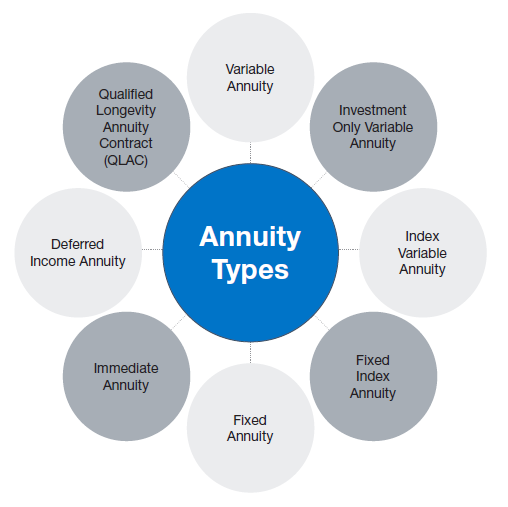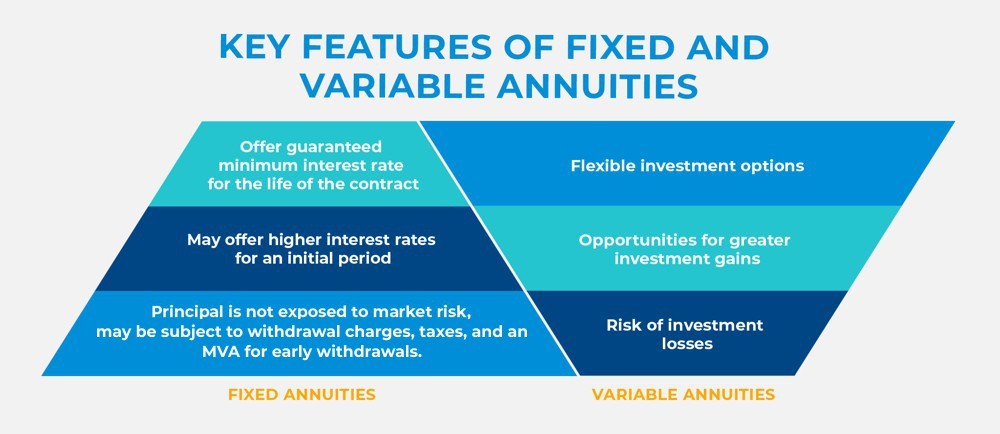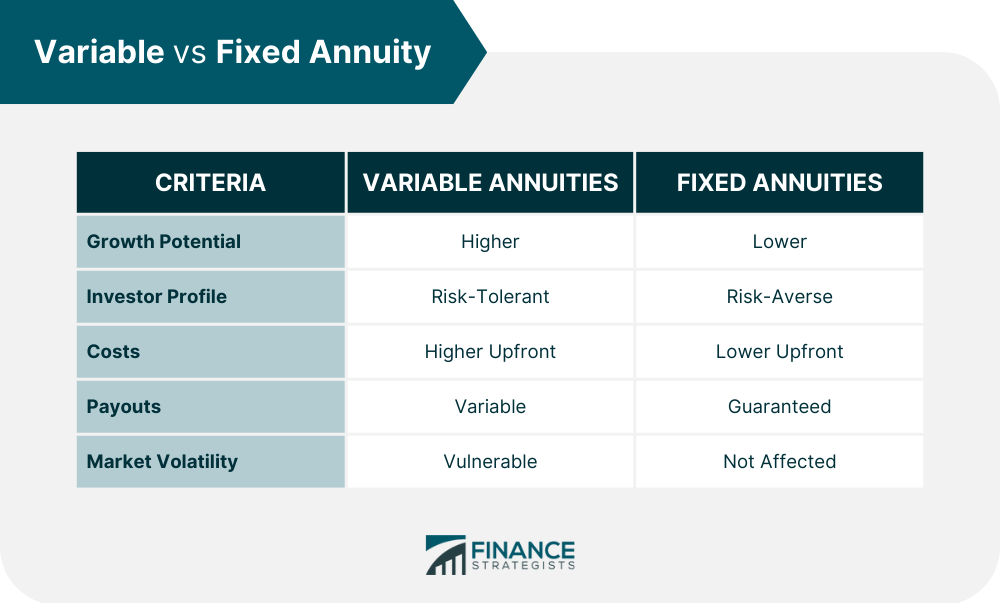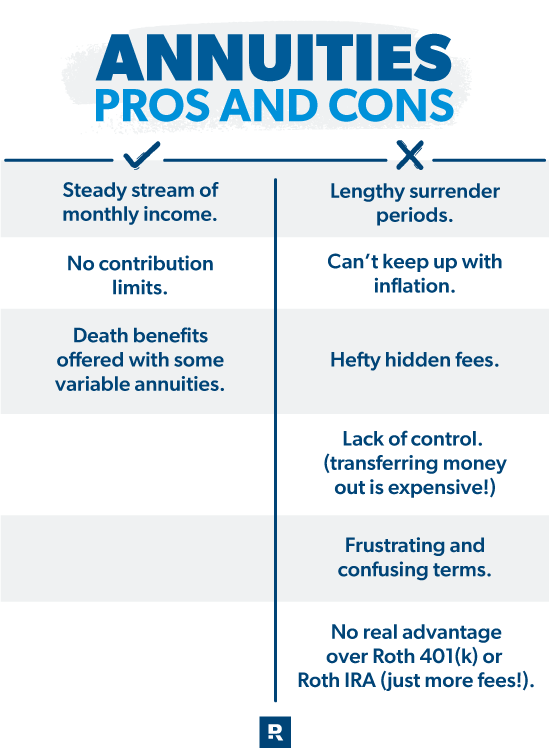All Categories
Featured
Table of Contents
Just as with a dealt with annuity, the owner of a variable annuity pays an insurer a round figure or series of payments in exchange for the guarantee of a collection of future settlements in return. However as stated above, while a dealt with annuity expands at an assured, continuous price, a variable annuity expands at a variable price that depends upon the performance of the underlying financial investments, called sub-accounts.

Throughout the build-up stage, properties purchased variable annuity sub-accounts expand on a tax-deferred basis and are exhausted just when the contract owner takes out those revenues from the account. After the build-up stage comes the earnings phase. In time, variable annuity properties must in theory increase in worth up until the agreement proprietor chooses she or he want to begin taking out money from the account.
The most considerable problem that variable annuities typically existing is high expense. Variable annuities have numerous layers of fees and costs that can, in accumulation, produce a drag of up to 3-4% of the contract's value each year.
Decoding Fixed Annuity Or Variable Annuity A Comprehensive Guide to Investment Choices What Is Fixed Annuity Vs Equity-linked Variable Annuity? Pros and Cons of Various Financial Options Why Choosing the Right Financial Strategy Matters for Retirement Planning Fixed Income Annuity Vs Variable Growth Annuity: A Complete Overview Key Differences Between Different Financial Strategies Understanding the Key Features of Long-Term Investments Who Should Consider Strategic Financial Planning? Tips for Choosing the Best Investment Strategy FAQs About Planning Your Financial Future Common Mistakes to Avoid When Planning Your Retirement Financial Planning Simplified: Understanding Your Options A Beginner’s Guide to Smart Investment Decisions A Closer Look at How to Build a Retirement Plan
M&E expense costs are calculated as a percentage of the agreement value Annuity companies hand down recordkeeping and various other management costs to the contract owner. This can be in the form of a level yearly cost or a portion of the agreement value. Management costs might be consisted of as part of the M&E threat charge or might be examined independently.
These charges can vary from 0.1% for easy funds to 1.5% or more for actively taken care of funds. Annuity agreements can be customized in a number of ways to offer the certain requirements of the contract owner. Some usual variable annuity bikers include guaranteed minimal buildup advantage (GMAB), guaranteed minimum withdrawal advantage (GMWB), and assured minimal revenue benefit (GMIB).

Variable annuity contributions provide no such tax reduction. Variable annuities tend to be highly inefficient lorries for passing wealth to the next generation since they do not enjoy a cost-basis modification when the original agreement owner dies. When the owner of a taxable investment account dies, the price bases of the financial investments held in the account are adapted to show the market costs of those financial investments at the time of the proprietor's death.
Understanding Financial Strategies Key Insights on Variable Annuity Vs Fixed Indexed Annuity What Is Fixed Index Annuity Vs Variable Annuities? Features of Smart Investment Choices Why Fixed Annuity Vs Variable Annuity Is a Smart Choice Fixed Annuity Vs Equity-linked Variable Annuity: Simplified Key Differences Between Different Financial Strategies Understanding the Rewards of Fixed Vs Variable Annuity Who Should Consider Strategic Financial Planning? Tips for Choosing Choosing Between Fixed Annuity And Variable Annuity FAQs About Planning Your Financial Future Common Mistakes to Avoid When Choosing a Financial Strategy Financial Planning Simplified: Understanding Fixed Index Annuity Vs Variable Annuity A Beginner’s Guide to Variable Vs Fixed Annuity A Closer Look at How to Build a Retirement Plan
Such is not the instance with variable annuities. Investments held within a variable annuity do not get a cost-basis change when the original owner of the annuity passes away.
One substantial problem associated with variable annuities is the capacity for conflicts of passion that might exist on the part of annuity salespeople. Unlike a monetary consultant, who has a fiduciary task to make investment choices that benefit the customer, an insurance coverage broker has no such fiduciary responsibility. Annuity sales are extremely financially rewarding for the insurance professionals who offer them since of high upfront sales payments.

Many variable annuity contracts consist of language which puts a cap on the portion of gain that can be experienced by certain sub-accounts. These caps stop the annuity proprietor from completely joining a part of gains that might or else be enjoyed in years in which markets generate considerable returns. From an outsider's viewpoint, presumably that investors are trading a cap on investment returns for the abovementioned ensured floor on financial investment returns.
As noted above, surrender costs can seriously restrict an annuity owner's ability to move possessions out of an annuity in the early years of the contract. Better, while most variable annuities permit contract owners to take out a specified quantity throughout the build-up phase, withdrawals past this amount normally result in a company-imposed charge.
Withdrawals made from a fixed rate of interest investment option might additionally experience a "market value adjustment" or MVA. An MVA adjusts the value of the withdrawal to reflect any type of adjustments in rates of interest from the moment that the cash was bought the fixed-rate choice to the moment that it was withdrawn.

On a regular basis, also the salespeople that offer them do not completely comprehend just how they work, therefore salesmen often take advantage of a buyer's emotions to sell variable annuities rather than the benefits and viability of the products themselves. Our company believe that investors should totally comprehend what they possess and just how much they are paying to own it.
Understanding Fixed Income Annuity Vs Variable Growth Annuity Key Insights on Your Financial Future Breaking Down the Basics of What Is Variable Annuity Vs Fixed Annuity Advantages and Disadvantages of Different Retirement Plans Why Fixed Annuity Or Variable Annuity Is a Smart Choice Fixed Vs Variable Annuity: Explained in Detail Key Differences Between Fixed Income Annuity Vs Variable Growth Annuity Understanding the Risks of Fixed Income Annuity Vs Variable Annuity Who Should Consider Fixed Vs Variable Annuities? Tips for Choosing Retirement Income Fixed Vs Variable Annuity FAQs About Fixed Annuity Vs Variable Annuity Common Mistakes to Avoid When Planning Your Retirement Financial Planning Simplified: Understanding Your Options A Beginner’s Guide to Smart Investment Decisions A Closer Look at Fixed Index Annuity Vs Variable Annuities
The same can not be said for variable annuity possessions held in fixed-rate investments. These possessions lawfully come from the insurance policy business and would for that reason be at threat if the company were to fail. Similarly, any type of assurances that the insurer has actually consented to offer, such as an assured minimal revenue benefit, would remain in question in the event of a service failure.
Consequently, possible purchasers of variable annuities should understand and take into consideration the economic problem of the issuing insurance provider prior to becoming part of an annuity contract. While the advantages and downsides of numerous kinds of annuities can be debated, the actual problem bordering annuities is that of viability. In other words, the concern is: who should possess a variable annuity? This inquiry can be hard to address, given the myriad variants readily available in the variable annuity world, but there are some basic standards that can assist investors determine whether annuities should contribute in their economic strategies.
As the stating goes: "Customer beware!" This post is prepared by Pekin Hardy Strauss, Inc. Variable annuity subaccounts. ("Pekin Hardy," dba Pekin Hardy Strauss Wide Range Management) for educational objectives only and is not intended as a deal or solicitation for organization. The info and information in this article does not comprise lawful, tax obligation, audit, financial investment, or other professional guidance
Table of Contents
Latest Posts
Highlighting the Key Features of Long-Term Investments A Closer Look at How Retirement Planning Works Defining the Right Financial Strategy Features of Fixed Vs Variable Annuity Pros And Cons Why Fixe
Understanding Financial Strategies Key Insights on Deferred Annuity Vs Variable Annuity Breaking Down the Basics of Investment Plans Benefits of Fixed Income Annuity Vs Variable Growth Annuity Why Fix
Breaking Down Fixed Vs Variable Annuity A Comprehensive Guide to Investment Choices What Is Variable Annuities Vs Fixed Annuities? Benefits of Fixed Vs Variable Annuities Why Choosing the Right Financ
More
Latest Posts